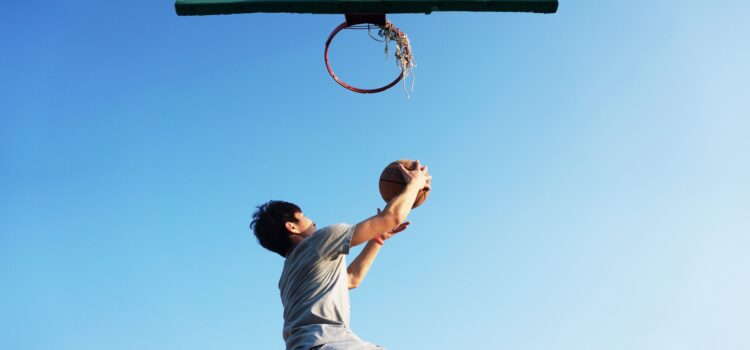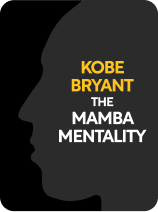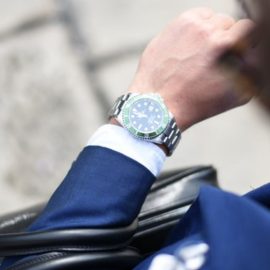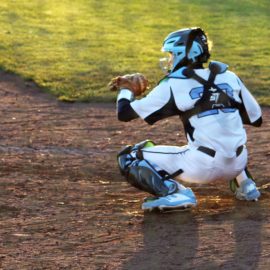

This article is an excerpt from the Shortform book guide to "The Mamba Mentality" by Kobe Bryant. Shortform has the world's best summaries and analyses of books you should be reading.
Like this article? Sign up for a free trial here .
Do you want to know how to get your head in the game? Is it challenging to make sure you stay focused before and during game time?
Basketball legend Kobe Bryant discusses this challenge in The Mamba Mentality. Relying on your skills and maintaining emotional and mental control can help you learn how to get your head in the game.
Keep reading to find out how to get your head in the game according to Kobe Bryant.
How to Get Your Head in the Game
Kobe was strategic about improving his skills in every aspect of the game—and that started with fundamentals. Making sure all your skills are in line is the first step of how to get your head in the game.
Many other players neglected the fundamentals, to the extent that Kobe’s focus on the basics actually gave him an edge over his competitors. While other players practiced dribbling tricks like crossovers, Kobe worked on making his footwork efficient. With the right footwork, Kobe could get where he needed to go on the court quickly while conserving energy. Additionally, as long as his feet were pointed in the direction he was going, Kobe could turn his head and upper body in a different direction to fool his defenders.
In his endless effort to enhance his game, Kobe was never intimidated or discouraged when he noticed areas where he could improve—rather, he welcomed the challenge. In the fifth game of the semifinal series at the end of his rookie season, Kobe shot four airballs that killed the team’s chance of advancing. Despite the disappointment, he never worried that his missed shots would ruin his career. Kobe was confident that he was destined to be an NBA great—he just needed to put in the work to get there. Kobe determined that he’d missed those shots because his legs were spent after a long season, so he started a weight training program to strengthen his arms and legs, and he came back stronger for his second season.
He also made a point of having a versatile, well-rounded set of skills. As a child, Kobe wanted his left hand to be as strong and agile as his right, so he practiced writing his name with his left hand. As he got older, he took the same approach with dribbling—he was just as strong at dribbling with his left hand as he was with his right. Similarly, he practiced shooting and passing from all distances in a variety of conditions. His versatility had two primary benefits:
- When Kobe faced opponents who had researched his strengths and tendencies, he was able to catch them off-guard by switching up his direction and his pace.
- When he had to play through injuries, he could adjust his playing style (for example, by playing with his left hand) and still have a strong game.
Kobe trained with a focus on staying in control. In other words, Kobe worked to avoid letting his opponent limit or otherwise dictate how he could play. Learning how to get your head in the game means staying focused and confident in your skills.
Maintain Mental and Emotional Control
As in any sport, playing basketball at an elite, professional level requires not just physical ability but also mental and emotional control. Players can get derailed if they get frustrated in the heat of the game, cocky and complacent when the scoreboard favors them, or discouraged and self-pitying when coming back from an injury. Although Kobe wasn’t immune to emotional highs and lows, he made a point of staying calm and focused. This is one of the methods of how to get your head in the game.
While other players listened to music as part of their pre-game routines, Kobe adapted his preparation based on the mindset he would need for the game: If he felt a game would require him to be high-energy, he listened to music that pumped him up. If he felt a game would require him to be calm and focused, he listened to calm music. Sometimes, Kobe sat in total silence and took in the sights and sounds that surrounded him. This was a habit he had had since childhood, but when he started playing under Phil Jackson and learned that it was a form of meditation, he practiced it even more deliberately.
That state of mind also allowed him to be strategic on the court, and to use the insight he’d gained from watching film of opposing players and teams. Two, three, and even four opposing players often guarded Kobe when he drove to shoot a basket. Instead of shying away, Kobe considered defenders’ playing styles—whether they were likely to foul him or jump straight up to try to block his shot. Based on his guards’ tendencies, he then decided whether to pivot and pass to an open shooter or to drive through his opponents to the basket. Kobe’s thorough preparation and mental clarity enabled him to make these split-second evaluations in the midst of a game, and is an example of how to get your head in the game and stay there.

———End of Preview———
Like what you just read? Read the rest of the world's best book summary and analysis of Kobe Bryant's "The Mamba Mentality" at Shortform .
Here's what you'll find in our full The Mamba Mentality summary :
- How Kobe Bryant was able to play and dominate the best players
- Why Kobe took up tap dancing for a summer
- How reading the referee's handbook helped Kobe improve his game






